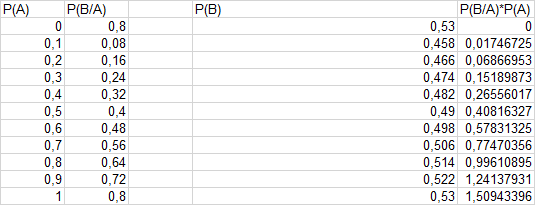I try to use Bayes Theorem to calculate the probability of $P(A|B)$. I have $P(A)$ in column1, $P(B|A)$ in colmn2, $P(B)$ in column 3. I get the following:
my calculations were:
$$P(B/A) = 0.8\times A$$ $$P(B) = (Bx*0,55)+((1-Bx)*(0,55))$$ $$P(A/B) = (Ax*Bx)/Cx$$
The probability gets above 1. What am I doing wrong?

